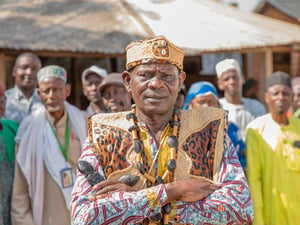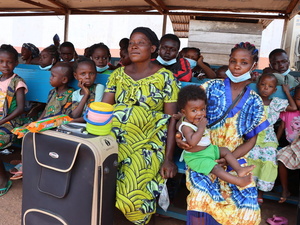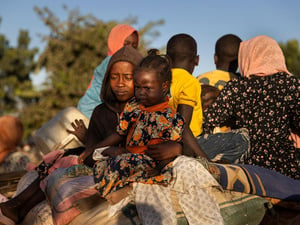Almost 9,000 people flee from CAR to Cameroon to escape fresh tension and violence
Almost 9,000 people flee from CAR to Cameroon to escape fresh tension and violence

A view of thousands of internally displaced people at Bangui's airport. Many of the new arrivals in eastern Cameroon say they fled from Bangui to escape clashes.
GENEVA, February 7 (UNHCR) - The UN refugee agency said on Friday that almost 9,000 people have fled to Cameroon in the past 10 days to escape violence in the Central African Republic.
UNHCR spokesperson Fatoumata Lejeune-Kaba told journalists in Geneva that during this period 8,762 people of various nationalities had crossed into the town of Kentzou in eastern Cameroon, mostly Central Africans (4,764) but including nationals from Chad (3,424), Cameroon (1,497), Nigeria (43) and Mali (10). This brings the number of CAR refugees in Cameroon to more than 20,000 since the CAR crisis began.
"The new arrivals told UNHCR staff they fled because of confrontations between the former Seleka and anti-Balaka militiamen in the capital, Bangui, and other towns in the north- west, such as Bour, Baboua, Beloko and Cantonnier. Some also fled from intense fighting in the areas of Berberati, Carnot, Baoro and Gambala. Others fled because of fear that the anti-Balaka militiamen were advancing towards their areas," Lejeune-Kaba said.
The Central Africans registered by UNHCR as refugees are mainly women and children and include 43 pregnant women and 89 people living with disability and in need of special attention. "The majority of them are Muslims who say they feared for their safety because of their perceived sympathy for the largely Muslim Seleka group," Lejeune-Kaba added.
Living conditions are precarious for the new arrivals, who are either hosted by impoverished local families or living in mosques, a stadium or on the streets. UNHCR is completing a nearby campsite and plans to transfer refugees there by the end of next week.
Lejeune-Kaba said UNHCR had also approached various embassies to take charge of their citizens. Before the current crisis, Cameroon was hosting 92,000 refugees from the Central African Republic (CAR), who started to arrive in 2004 to escape from rebel groups and bandits in the north of their country.
People fleeing recent inter-communal violence in CAR are also heading to the Democratic Republic of the Congo (DRC). Since Saturday, the DRC has received above 1,500 refugees and more are arriving daily. They came from areas still under the control of Seleka elements who, they say, are abusing civilians.
With the latest arrivals, there are now more than 60,000 CAR refugees who have sought asylum in the DRC, due to atrocities committed by the Seleka earlier in the conflict, and most recently due to recurrent fighting as well as indiscriminate attacks by armed Muslim and Christian mobs. Since the beginning of the conflict in December 2012, close to 246,000 CAR civilians have become refugees across the region.
Almost 840,000 people also remain displaced inside the Central African Republic. With no immediate prospect for their return home as the rainy season begins, UNHCR fears a worsening humanitarian crisis. There is a high risk of cholera and other public health issues, particularly in Bangui, where more than 413,000 people still live in makeshift sites.








